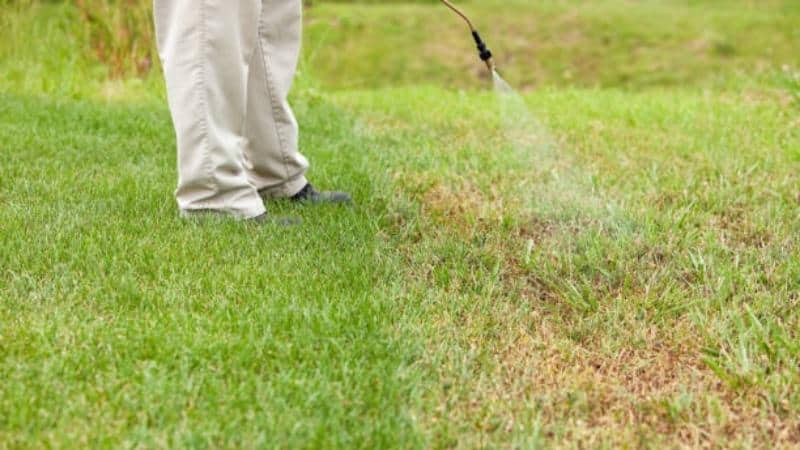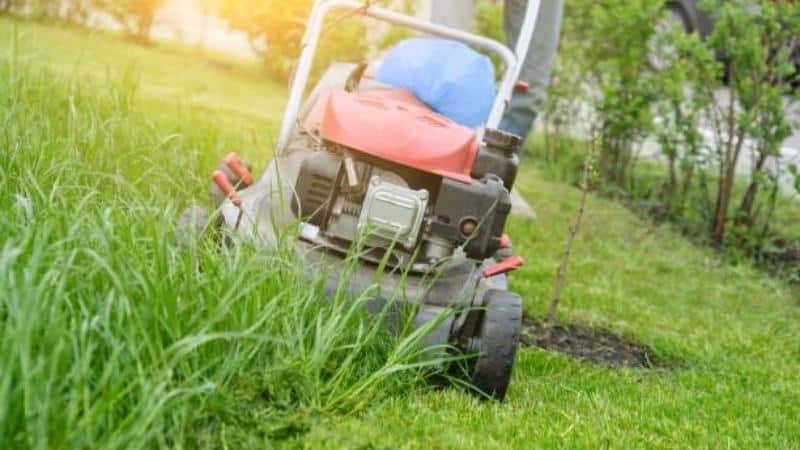Crabgrass is a coarse annual weed that comes up every summer and infiltrates the grass on your lawn. This incredibly resilient weed becomes a problem for homeowners to deal with. In this article, you will find out how to kill crabgrass without sacrificing your lawn grass. Eliminating it in time is essential. Even though crabgrass lives only one year, it damages the soil and makes it an unfavorable environment for normal lawn grass that lives for several years.
Guide on How to Get Rid of Crabgrass
- Take care of your lawn properly;
- Mow the lawn at the right height and frequency;
- Maintain an optimal rate of watering and fertilization;
- Eliminate crabgrass with organic treatments;
- Use chemical herbicides that contain Quinclorac.

Why is crabgrass a problem in summer?
Every summer crabgrass becomes a problem for homeowners trying to achieve a ‘manicured lawn.’ Since close-mowed lawns tend to open up, it creates a space for weeds to invade. Other factors such as light and frequent watering, especially in areas seeded in spring before the hot weather comes, also make ideal conditions for crabgrass to start growing on your lawn.
Crabgrass starts to germinate in spring when it becomes warm, and your lawn gets up to the temperature of 55-60 °F. In the short time before the fall, it produces hundreds of germinated seeds that can come up the next spring once the weather gets to the optimal warm point. Once the frost comes, the grass is killed, but the seeds it sowed in the summer will come up and cause problems for you the next spring.
Proper care of your lawn, maintaining its optimal height of more than 2½ inches, and pulling the weed out in time in spring can help you cope with crabgrass. However, if you have a serious weed infestation, you might need to look for the best way to kill crabgrass on the lawn.
Lawn treatment: when you should act
Spring, mid-summer, and first frosts are when you should act to cope with this weed. Using a pre-emergent herbicide in spring can help you stop crabgrass in summer. These herbicides make the perfect treatment for the seedlings left in the soil from the previous year, so you should apply them as early as possible, without waiting until it gets really warm.
When it’s already summer, and you need to manage crabgrass, you can use post-emergent herbicides. They tackle crabgrass which has already started growing and is about to seed unless you find the best way to kill crabgrass in the lawn before fall. As soon as you notice crabgrass, you should apply this herbicide because the older the plant becomes, the more difficult it will be to get it out of your lawn.
How to get rid of crabgrass naturally
There are many organic ways to cope with this weed. Unlike some other weeds, crabgrass responds well to organic treatments if you use them in tandem with proper lawn maintenance.
Weeding
One of the methods is to pull out crabgrass on the lawn in spring before it starts to germinate. Crabgrass doesn’t reproduce through roots, but try to pull out the entire plant as much as it’s possible, including the roots. You can use claw weeders or other tools to do it.
Baking soda
If weeding didn’t help, you might want to use some organic substances for crabgrass control. Baking soda is very useful because it’s a natural phytotoxin. Instead of making a solution, try to spray your weeds with water and then sprinkle the baking soda powder over them. It will act more aggressively and effectively to eliminate crabgrass, but it also will damage any other plant you use it on. Try to be very precise in your application so that it does not hurt other beneficial grass and plants. If you have only a few patches of crabgrass, the best way to kill crabgrass on the lawn is to tackle them locally with baking soda, but it’s not ideal for a widespread infestation.

Corn gluten
Another natural method is to apply corn gluten because it doesn’t allow crabgrass seeds to form roots, and the plant dies. Due to a very high nitrogen volume, it’s also a great organic fertilizer for your lawn. You can use it on the already existing crabgrass or pre-emerging spring weed.
The way it works is that it provides additional nitrogen to your regular lawn grass and encourages it to grow faster. Therefore, you get no empty patches, and the lawn grass pushes out crabgrass. Remember that the best method of weed control is to keep your lawn dense and avoid empty patches that can be filled with emerging weeds.
How to kill crabgrass step by step
If you take care of your lawn properly, it will prevent crabgrass from growing. Remember to mow it at an optimal height, keep it dense, and sow the new grass seeds in any empty patches on the lawn. Keep an optimal watering and fertilization schedule to help your lawn grow strong and overcome crabgrass before it emerges. If you need to eliminate crabgrass, here’s a detailed step-by-step guide on how to proceed.
Step 1 Water your lawn
Soak your soil profusely with water using a sprinkler or a hose. Then give it about half an hour to fully soak in.
Step 2 Pull out crabgrass
Use any weeding tool to help you entirely remove crabgrass with the roots. If crabgrass is tall enough, and the soil is well-soaked, it should pull out easily even if you do it manually.
Step 3 Fill in the empty patches
Use compost and top seed the empty patches to promote new lawn grass there. Keep an eye on these patches regularly and water them frequently until your seeds start to sprout.
Step 4 Water your lawn
Switch your usual watering method to a more deep but less frequent regime. Use irrigation systems to allow for deep watering that will promote the growth of the grass.
Step 5 Mow the grass
Mow new patches of grass at a height above 2 ½ — 3 inches and keep them tall. This way, the lawn grass will manage to protect itself and control the weed on its own, not allowing the weed to emerge.
Step 6 Switch to organic treatment
If you weren’t able to keep your lawn dense and healthy, and crabgrass came back, try using organic treatments. For rare patches, you can use baking soda powder or a vinegar solution, for more systemic ones — corn gluten.
Step 7 Use pre-emergent and post-emergent herbicides
If it is the early spring, you can use pre-emergent herbicides that will stop the crabgrass from growing from the seeds it left last summer. If you have a problem with crabgrass in summer or fall, use a post-emergent herbicide.
Pre-emergent herbicides need to be widely spread to prevent the seeds from sprouting, so apply them to cover the entire area of your lawn. Post-emergent herbicides should be applied directly to the patches of crabgrass, without allowing them to spread widely and affect beneficial lawn grass.
Step 8 Keep your lawn dense and healthy
Re-seed all the cleared-out patches to allow new grass to grow. Mow it at the optimal length of 2 ½ — 3 inches.

FAQ About How to Kill Crabgrass
Removing crabgrass is a very labor-intensive task, and questions will inevitably arise along the way. Here I’ve gathered the most common questions I get about crabgrass. I will try to answer them as concisely as I can.
What kills crabgrass permanently?
Selective post-emergent herbicides that contain Quinclorac are the most effective in getting rid of crabgrass in summer. However, be careful and don’t use it on types of grass, like St. Augustine or Floratam.
What kills crabgrass and not the lawn?
Organic methods like corn gluten act like a strong booster for your lawn grass to push out crabgrass. Pre-emergent herbicides will stop crabgrass without killing other grass. For post-emergent products, use only selective herbicides aimed at weeds.
What is the best product to kill crabgrass?
The most effective lawn crabgrass treatment is selective herbicides, in particular those that contain Quinclorac. They are the best way to kill crabgrass in the lawn without damaging other lawn grass types and will give you permanent results.
Kill Crabgrass Without Killing Your Lawn
Most guidelines on dealing with crabgrass list adequate lawn care as the best prevention measure. Not mowing your lawn too short and switching to the deeper and less frequent watering can create restraining conditions for crabgrass. In spring, you can also use pre-emergent herbicides that will kill the seeds before they sprout. To get rid of the weed naturally in summer, you should pick it out and fix the bald patches. Use post-emergent herbicides to destroy crabgrass on your lawn for good.
Have you ever faced any problems related to crabgrass? Let us know in the comments!

